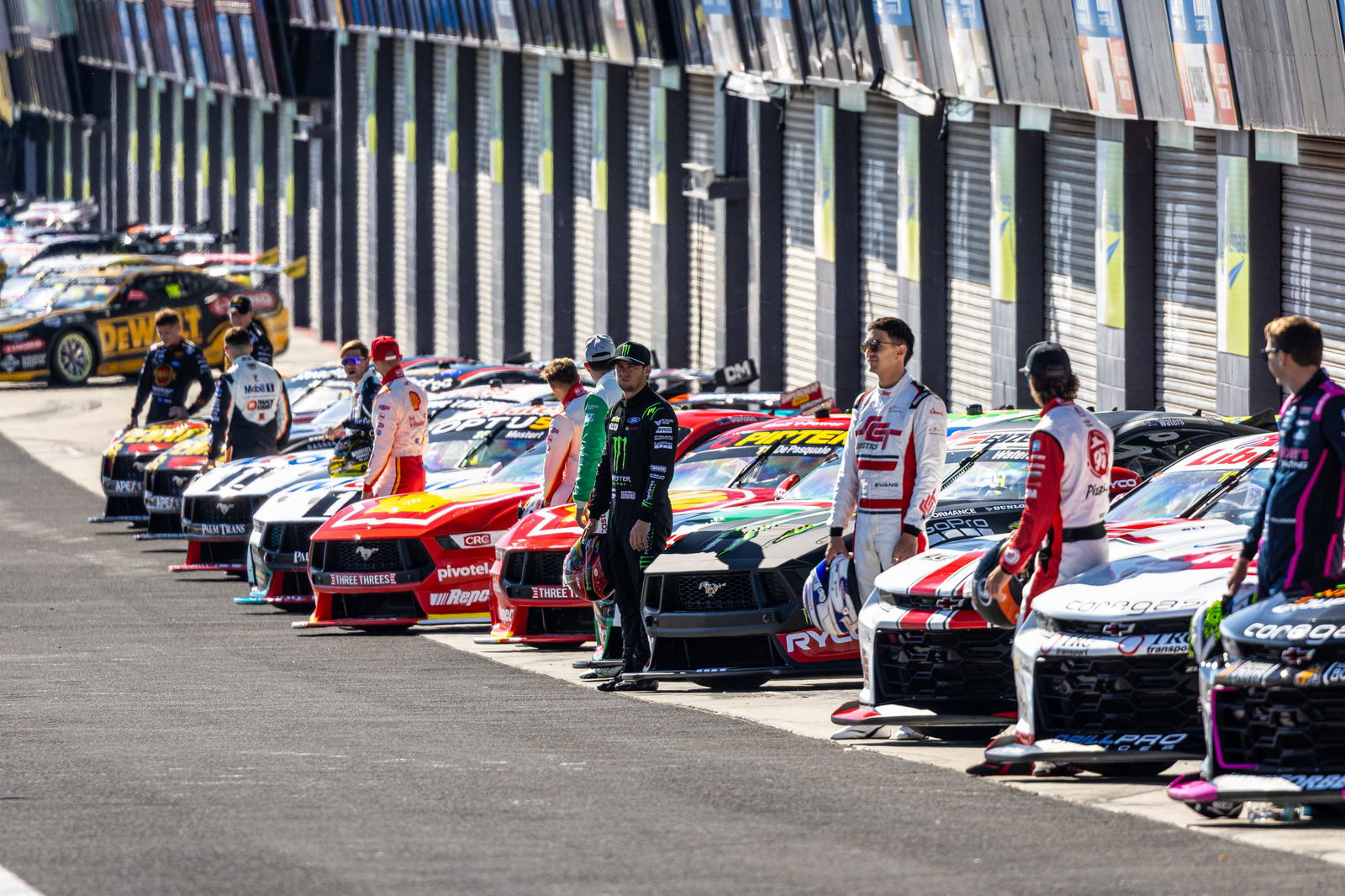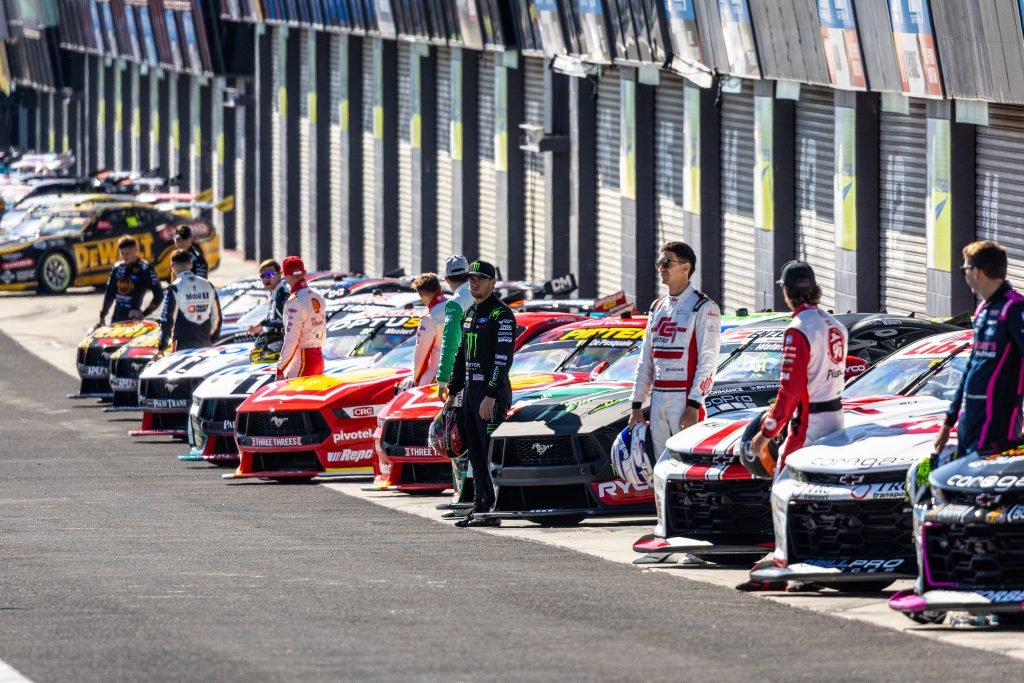

Additions and modifications to Rule A1.4 of the Supercars Operations Manual, entitled ‘Technical Parity’ are among the many updates made to the category’s rulebook over the off-season.
Rule A1.4 is now an exact match of, or at least very close to, text in the Teams Racing Charter which pertains to technical parity, Speedcafe has learned.
What it means is that the parity-related terms of the TRC, which is a contract between the teams and Supercars, are now in the public domain.
Among those terms which have now found their way into the Operations Manual are one which makes clear that the onus is on the homologation teams to build a competitive package.
Rule A1.4.6 states:
Supercars is dependent upon the input of the individual Homologation Teams and cannot be responsible for any of those Teams presenting cars and/or engines for homologation that are uncompetitive. Supercars will offer guidance to help Homologation Teams whenever reasonably possible.
That is a notable point in the context of ongoing Ford engine development.
His counterpart at Dick Johnson Racing, Ryan Story, who is now leading the Ford engine project after a takeover from Herrod Performance Engines, empathised with Triple Eight’s plight.
Rules A1.4.6 to A1.4.9 (as reproduced below) are additions to the Operations Manual, while an attempt to distinguish between sporting parity and technical parity has been inserted in the existing Rule A1.4.4.
Regarding “equalisation of the abilities of participating Drivers and/or Teams,” it notes that, “such equalisation could be, and is in some categories, defined as sporting parity.”
The wording of Rule A1.4.5 has changed slightly, but not in any substantial manner.
Speedcafe understands that the changes do not materially impact how parity is managed by Supercars, although they do help clarify the rights and responsibilities of teams for those who are not parties to the TRC.
Meanwhile, the rule pertaining to parity reviews has been shifted from Rule A1.4.6 into its own section, entitled ‘Technical Parity Review’.
That text, though, is effectively unchanged relative to the 2023 Operations Manual.
The TRC was prepared by the teams as part of the sale process to RACE, which was completed in late-2021.
Whincup is eager for aerodynamic and engine parity to be established so that Supercars can “get rid of the trigger set-up,” a point which Story also agreed with.
“Yeah,” replied Story when the question was put to him.
“Once we’ve been on the AVL dyno, we’ve then basically followed world’s best practice with both aero and engine, to go racing.
“We run on the principles of technical parity, and anything else is sporting parity. That’s where precisely what we want to be.”
2024 Supercars Operations Manual
A1.4 Technical Parity
1.4.1 The Supercar Category is a technical parity category.
1.4.2 The Supercar Category is underpinned by the governing principle that to the extent that it is possible, Competition will take place between the different makes and models of Cars as equalised by the technical parity mechanisms enshrined in the Rules.
1.4.3 The technical parity mechanisms used by Supercars include, but are not limited to:
1.4.3.1 Stringently applied technical specifications and homologation requirements; and
1.4.3.2 Aerodynamic equalisation, and
1.4.3.3 The use of Category wide Control Components and Control Specification Components.
1.4.4 The Category is not about equalisation of the abilities of participating Drivers and/or Teams (such equalisation could be, and is in some categories, defined as sporting parity). It is up to individual Drivers and/or Teams to Compete to the best of their abilities under the principle of technical parity.
1.4.5 Under the umbrella of technical parity, Supercars will use its best endeavours to ensure a level playing field for all competing makes and models of Car in the following specific areas as is reasonably possible:
1.4.5.1 Total Aerodynamic Downforce
1.4.5.2 Aerodynamic Downforce Balance
1.4.5.3 Aerodynamic Drag
1.4.5.4 Centre of Gravity
1.4.5.5 Engine Power
1.4.5.6 Fuel Consumption
1.4.6 Supercars is dependent upon the input of the individual Homologation Teams and cannot be responsible for any of those Teams presenting cars and/or engines for homologation that are uncompetitive. Supercars will offer guidance to help Homologation Teams whenever reasonably possible.
1.4.7 The benchmarks for technical parity will always be the incumbent makes and/or models, whether regarding engine or aerodynamic performance, and never an incoming make and/or model. The onus is on the relevant Homologation Team for an incoming make and/or model of car to reach the existing benchmarks set for technical parity, and the onus is upon Supercars to ensure that these benchmarks are not exceeded.
1.4.8 Over and above these obligations, Supercars is obliged to enforce the Technical Rules included in the Operations Manual at all relevant times including, but not limited to, ensuring the correct use of Control Components and Control Specification Components, both of which are a vital part of the technical parity principle.
1.4.9 As a result of new makes/models of car being run by single teams – as opposed to multiple independent teams running the same makes/models of car in competition with one another – it is important to recognise the importance of continuing to make the distinction between technical parity and sporting parity.
A1.6 Technical Parity Review
1.6.1 The Board of Supercars, upon the recommendation of the GMM, may, at their discretion, order at any time during a Season that a parity review between all makes and models of Cars be undertaken.
1.6.1.1 The results of any such parity review, following consultation with the Supercars Commission, will then be referred to the Board of Supercars by the GMM;
1.6.1.2 If in the opinion of the Board of Supercars, a significant disparity exists between one or more of the makes and models of Cars competing in the VCS, it shall ask the GMM to develop a parity adjustment program that will take account of the time available to correct the identified disparity and that may, amongst other things, include the requirement to develop, test by any means and re-homologate components that will be effective in correcting the identified disparity.




















Discussion about this post